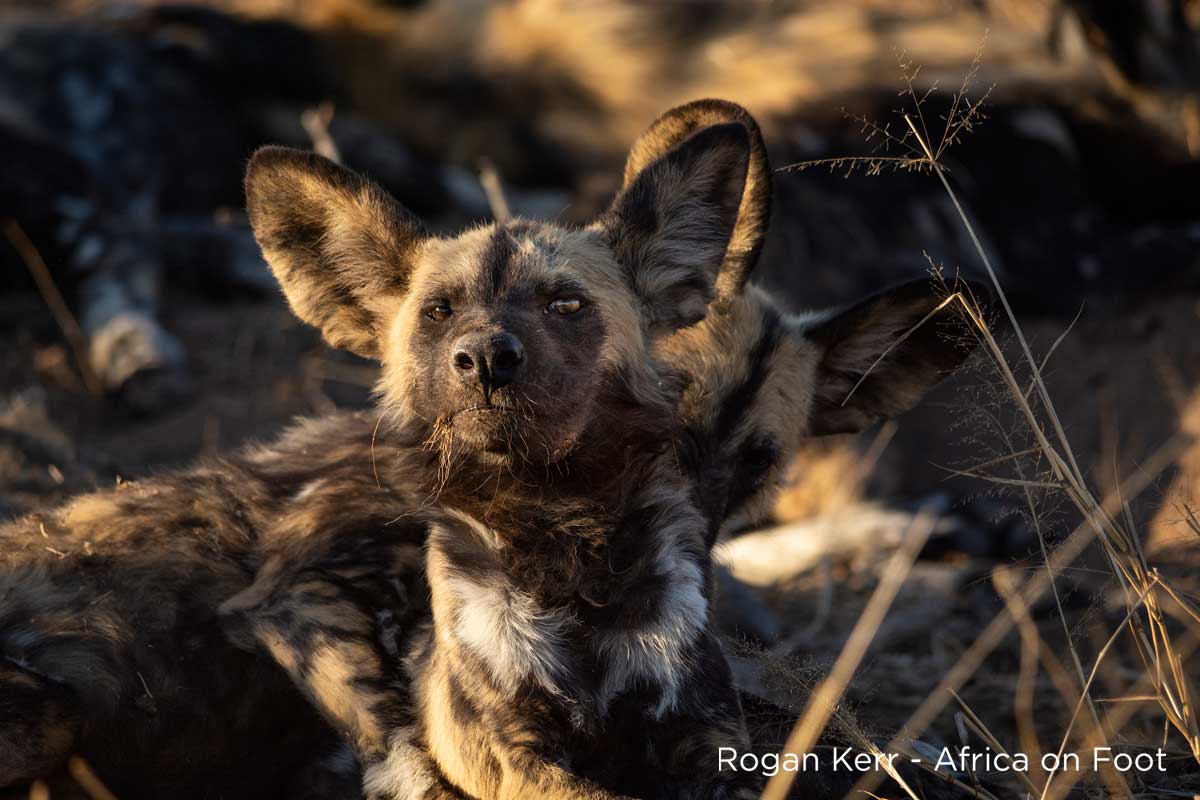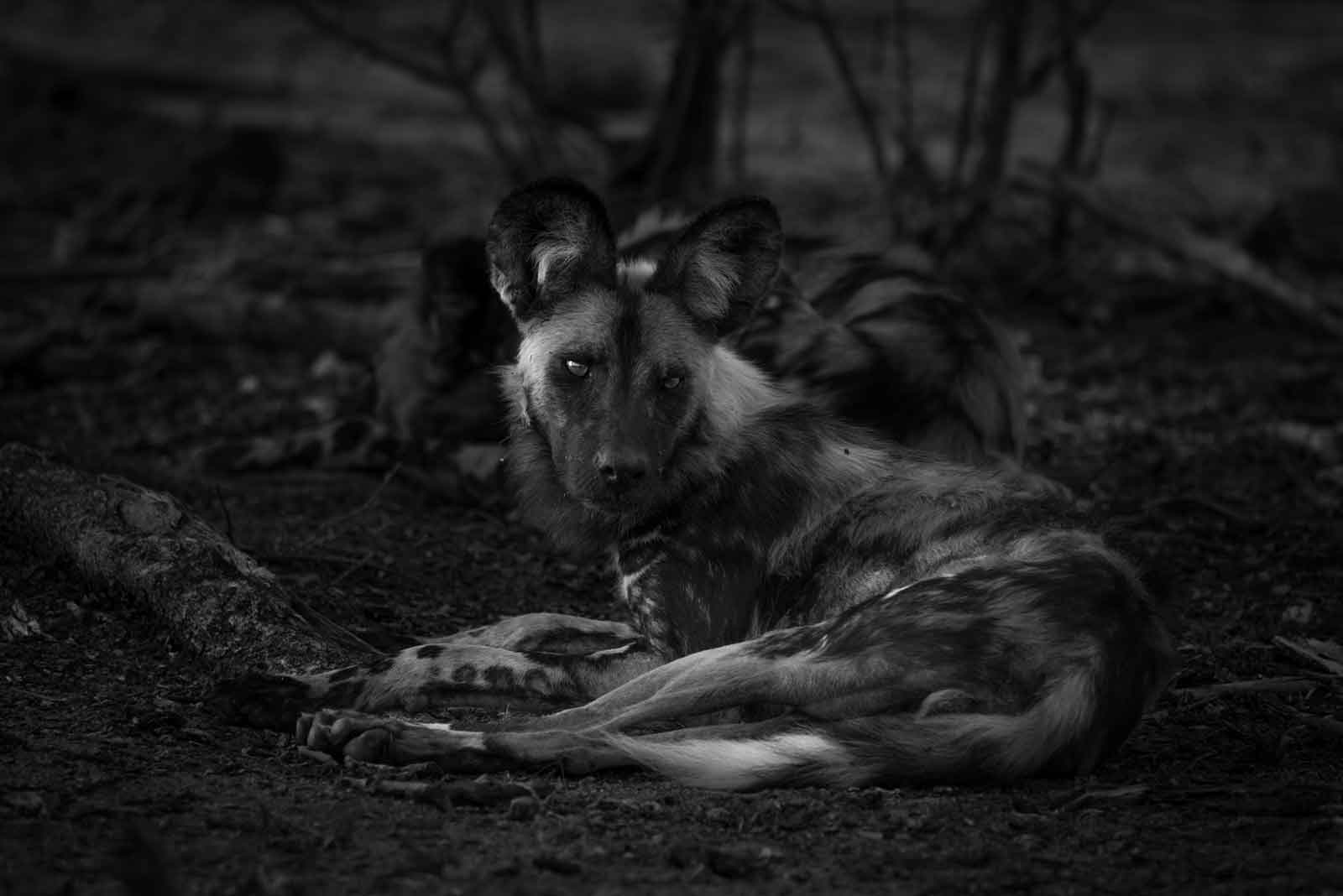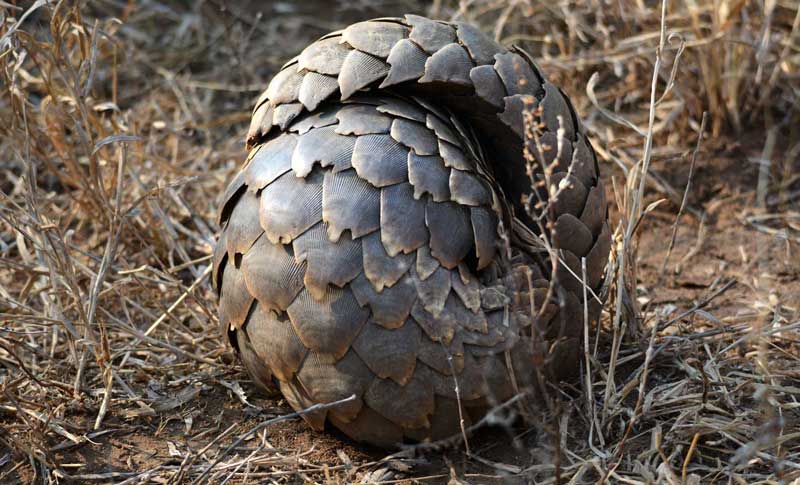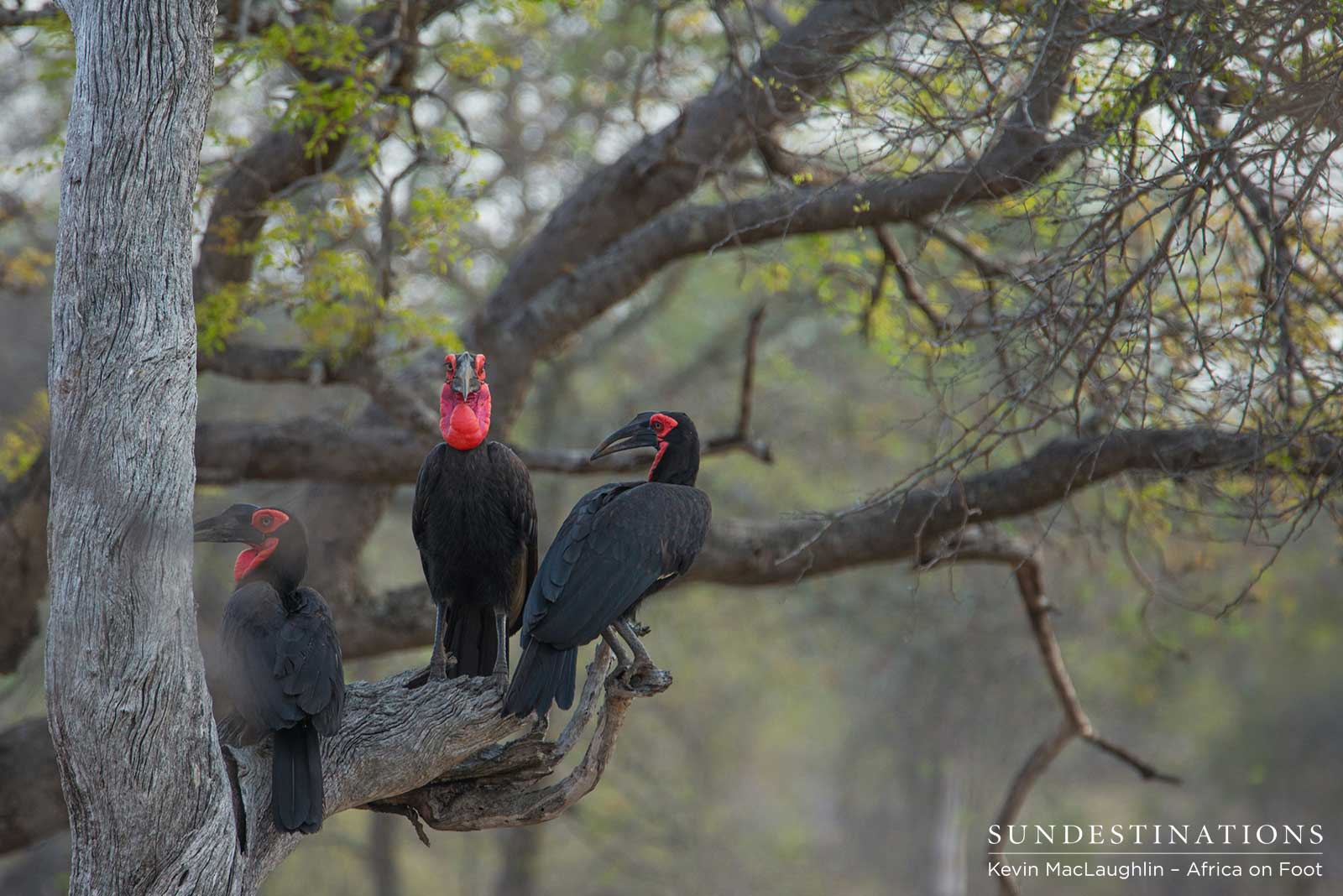IUCN list assigns a conservation status to species whose numbers are facing a decline in the wild. The assigned category is dependent on a number of criteria, but it mainly has to do with the rate of the declining numbers. Our reserves and concessions within southern Africa provide the perfect natural habitat for a number of vulnerable and endangered species to thrive; and even increase their population if human encroachment, disease and wildlife crime are kept at a minimum. These elusive species are often to tricky find in the wild (for obvious reason), but when spotted our guides and guests are always encouraged to revel in the moment and exercise gratitude when in the company of such rare animals. Our endangered animals to spot on safari include ground hornbills, African wild dogs, pangolins and black rhino.
Let’s find out why these species are on the decline, and also why it’s so hard to find them in the wild.
African Wild Dogs
Status: Endangered
The African wild dog is a nomadic species that covers a wide range and is only really sedentary during the denning period. Not only are they endangered, but they also have a huge home range, which makes it near impossible to guarantee sightings. The denning period sees the highest recorded number of sightings in the wild, and it’s during this period of time that sightings can be consistent. Wild dogs have a number of complex reasons as to why their numbers are declining, most of which are due to natural fluctuation in their population numbers. Inbreeding in wild dogs has also contributed the fluctuation in numbers, with a current life expectancy of only 6 years.
Wild dogs experience conflict with cattle farmers, human activities (getting caught in snares) and succumb to infectious disease when they come into contact with domestic animals. These factors all play a massive part in the decline in numbers of these gregarious animals.


Ground Pangolin
Status: Vulnerable
The pangolin (scaly anteater) is one of the most critically endangered species in the world. According to IUCN, the ground pangolin found in southern Africa is considered vulnerable, and this status is largely due to illegal wildlife trafficking. The pangolin is hunted for its meat and scales, and used in all sorts of make-believe medicine. Ultimately, we humans are responsible for the plummeting numbers in this prehistoric looking creature. It’s near impossible for the pangolin to breed prolifically and catch up to the rate at which they’re being poached. Pangolins are shy, solitary animals that have a slow breeding rate. They only breed once a year and give birth to one pangopup at a time. It is believed that seeing a pangolin in the wild is good luck!

Ground Hornbill
Status: Vulnerable
The southern ground hornbill is a large black bird with red markings (wattles) on its face. This comical bird usually occurs in grassland, savannah and woodland habitats across their distribution range. They’re omnivorous feeders and spend plenty of time foraging on the ground for food, which is where guests will normally find them. The reasons ground hornbills are globally vulnerable is because of habitat encroachment and ingesting poisons.

Black Rhino
Status: Critically Endangered
Because of black-market trafficking, the black rhino is now critically endangered. Wildlife crime continues to plague the species, but there are reserves in the Kruger that still have black rhino roaming free in the bushveld. Black rhino and white rhino are found in Africa, but the black rhino is far rarer than the white. The black rhino is more aggressive than the white rhino, and not nearly as territorial. Black rhinos have two horns, which makes them prime candidates for wildlife poachers.


